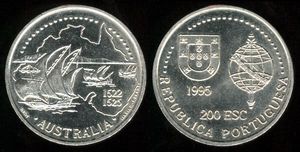You are currently browsing the tag archive for the ‘stamps’ tag.
Many moons ago, I was something of an avid philatelist. You might even say that I suffered from philatelatulence. I collected stamps omniverously; first day covers, stamp packs, mint, used, abused, MUH, MNH, MLH, you name it, I was into it. I collected stamps featuring basketball, sports, shipwrecks, penguins. I have vivid memories of a particular set of Polish stamps featuring bizarre feats of exploration, such as personal submarines, etc. Eventually, I settled on collecting stamps of the Australian Antarctic Territory.
Then, in what would be a familiar turn for many, I left stamp collecting for several years, in order to pursue more, erm, wholesome activities. Nonetheless, philately and, to a lesser extent, numismatics, have remained of interest to me. Two years ago I read Dennis Altman’s Paper Ambassadors: The Politics of Stamps (Sydney, 1986), which revolutionised my understanding of the intricacies of what mostof us consider a simple hobby. Altman’s straightforward but penetrating book alerted me to the fact that stamps act as ambassadorts of the countries for which they are issued. They are labels which have the potential to portray particular images of a nation; little advertisements of ideology, or, sometimes, territory.
And the Portuguese are still at it. In 1995, the Portuguese government issued a 200 escudos coin which celebrated the discovery of Australia in 1522 and 1525 by Portuguese navigators.
Not content with an isolated numismatical shenanigan, in 1999 the Portuguese issued a set of two stamps and a miniature sheet entitled ‘Os Portugueses na Australia’ (the Portuguese in Australia). Both were launched at the Australian Stamp expo held at Melbourne in 1999, the major theme of which was ‘discovery.’
The design of these stamps is interesting: two aboriginals gesture outward (presumably in horror) at two Portuguese caravels lurking on the coast. A mob of kangaroos bounds about, their attention fixed firmly in the opposite direction. The minature sheet depicts hooting cockatoos and a frill-necked lizard, evidently cohabitating in a quasi-Edenic paradise. Slightly more seriously, the posture of the aboriginals is not aggressive – suggesting an encounter with the Portuguese sailors would have been welcome. When I look atthese designs, I can’t help but recall the finale to Mel Gibson’s awful film Apocalypto.
My Portuguese is unfortunately insufficient to decode the lengthy statement recorded on the mini sheet, but sufficient enough to recognize references to Lope de Vega, Mendoca and other Portuguese explorers thought to have been active around the continent now known as Australia in the sixteenth and seventeenth centuries.
Of course, these coins and stamps represent a rather mild assertion in the debate concerning Portuguese priority in the discovery of Australia. The present orthodox view is that the Dutchman Wilhem Jansz was the first European to discover Australia in 1606. But of course, there is a wealth of literature, much hysterical, some historical, arguing for Portuguese priority.
In any event, these coins and stamps provide an interesting example of ongoing European, although particularly Portuguese, interest in Australia and its history. Will the Dutch, Chinese, Spanish, Egyptians or Phoenecians follow suite? The collectors are waiting…




